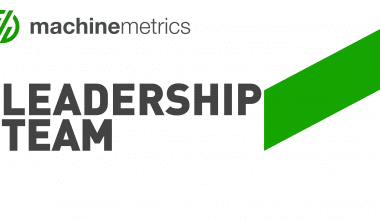Creating a regular and thorough approach for recognizing staff achievements is a crucial component of supporting your company’s growth and success. Employees that receive recognition and feel valued for their efforts are more contented, productive, and motivated. There are various ways to implement an employee recognition programs at companies. Below, we learn about employee recognition best modern ideas and programs, how to build them, and some companies with the best employee recognition programs. Let’s get to it.
What is Employee Recognition?
Employee recognition is all about recognizing the efforts and achievements of people and teams within your organization.It’s all about making an emotional connection with your employees and your organization, all while supporting their efforts and being true to your firm’s principles.
What is an Employee Recognition Program?
Employee recognition programs encourage employees to conduct good job by rewarding them for their efforts and dedication. They are intended to maintain high standards of behavior, offer employees with motivation and feedback, and publicly recognize great wins. Overall, employee recognition is a method of expressing gratitude for an employee’s successes, efforts, and work.
You can implement one or more recognition programs to recognize a variety of successes, such as work anniversaries, favorable client feedback, or other workplace achievements.
Benefits of Employee Recognition Programs
Rewarding exceptional behavior in the workplace can be a tremendous motivator for employees and help to develop a company culture that values growth and achievement. You may dramatically enhance productivity and employee happiness by investing time and resources in motivating employees and sharing their triumphs with the organization.
Employee recognition programs can have a positive impact on companies in the following ways:
#1. Encourages engagement
Employee appreciation programs have the potential to significantly enhance overall employee engagement rates. Employees are more engaged in their work when their efforts are appreciated. This can lead to higher productivity and innovation in the long run.
#2. Improves performance
Employees who feel recognized and valued by their boss are more likely to excel at their jobs. Recognized employees have a positive impact on their outlook, happiness, and performance.
#3. Improves company culture
Employees feel cared for when leaders take the time to recognize them when they perform well. This strengthens the bonds between managers and their teams.
#4. Brings in new talent
It is critical to attract top people to your firm if you want to expand in your industry. Many of the most outstanding individuals want to work for a company that rewards its employees for their accomplishments. Implementing employee recognition programs and sharing them with potential new employees will help your recruiting efforts.
#5. Increases retention rates
Employees who do not feel appreciated for their labor and successes are more likely to depart an organization than those who do. Staff recognition can help your firm enhance overall staff retention and lower turnover rates.
Types of Employee Recognition Programs
Every employee recognition program should incorporate both social and monetary reward, as well as peer-to-peer acknowledgment.
Companies can use social recognition to affirm and recognize activities that are consistent with their company culture. This type of appreciation can take the shape of a shout-out or a digital badge that recognizes personnel. Social recognition makes people feel more interested and curious about their coworkers’ work by creating a community similar to a personal network.
#2. Monetary recognition
More than 80% of employees do not feel recognized or appreciated. To make staff feel appreciated, consider presenting monetary rewards. Employers send points to employees, who can then donate them to colleagues in exchange for recognition in point-based compensation structures. Points can be redeemed for rewards of their choosing, making them more valuable than pre-selected gifts.
#3. Peer-to-peer recognition
By practicing offering direct, positive feedback, managers can grow as leaders. However, acknowledgment does not always have to come from the top. To support the good work of every employee, appreciation should come from both peers and superiors. Recognition platforms that allow any employee to publicly recognize a team or person can make everyone feel as though their efforts are recognized and appreciated.
Read Also: EMPLOYEE APPRECIATION DAY: Best Ideas For Celebrating Your Employees
How to Build an Effective Employee Recognition Program
It takes considerable forethought to develop an employee appreciation program that employees believe in and want to use. We’ve outlined the essential steps to get started below.
#1. Design the program
Make sure your employee recognition program is versatile so you can try out different ways to acknowledge staff. Perhaps most significantly, your program must be so simple to use that it fits into the workflow of every employee.
- Set goals: Setting goals is an important first step in building your recognition program. Eighty-eight percent of businesses establish a recognition program in the hopes of enhancing employee engagement. Consider whether these are the same goals you want for your employee recognition program.
- Budget: Determine how much money you will spend on your recognition program. You must budget for good recognition software as well as monetary rewards. Find resources that will assist you in tracking and modifying your program spending.
- Policies in outline: Outlining your recognition program’s policies can help employees grasp the hows and whens of recognition. Show employees examples of “good recognition” and how points may be redeemed for various levels of rewards.
#2. Introduce the new program
Be prepared to devote time to training and communication. Everyone, from executives to managers to individual contributors, must understand how to use the program and why recognition is such a vital part of your culture. Companies typically use company-wide meetings to promote programs and introduce the finest employee recognition concept inside the corporate culture.
#3. Measure the results
Measuring performance in important business areas such as retention, engagement, or customer satisfaction before and after implementing employee recognition programs naturally relates recognition to the bottom line of companies. This is critical for maintaining upper-level leadership buy-in.
#4. Find the right recognition platform
Employees may easily deliver monetary and social recognition throughout the whole employee network using the best recognition tools. This should not interfere with their productivity or make it difficult to integrate with intranet portals, instant messaging applications, or learning management systems. You want to ensure that your platform can meet your recognition demands on all fronts, from a simple user experience to real-time data, and that it can store all of your recognition programs in one place.
Examples of Employee Recognition Programs to Try
Learning how your employees prefer to be thanked will help you pick which sorts of employee appreciation to use on a regular basis. Here are a few things you can put in place to help staff be recognized for their efforts.
#1. Years of Service award
An employee award that recognizes years of service encourages new workers to stay dedicated to the role while helping tenured staff stay motivated. When new employees witness their employer paying employees based on their years of service, they may become more motivated. Employee retention can also be improved by recognizing employees based on years of service.
#2. Customer service award
Employees in customer service roles can be appreciated by recognizing them for exceeding sales targets, exhibiting leadership abilities, earning favorable client feedback, or providing great customer service. Customer service staff can be kept engaged by rewarding them with praise, a bonus, or flexible schedule.
#3. Employee appreciation events
Another option to honor employees is to host an employee appreciation event. Praise for good work in front of coworkers can promote self-esteem and make employees feel valued, which can lead to increased motivation to achieve. When other employees observe a colleague get appreciation, they may be motivated to work more in order to receive comparable recognition. Other suggestions for appreciation events include surprise parties, business outings, and holiday parties.
#4. Employee recognition wall
Consider creating a board or devoting a wall where everyone may offer expressions of gratitude to their colleagues. Not only will this motivate employees who have been recognized to keep up the good job, but it may also encourage others to work more so that they, too, can be recognized.
Shouting out an employee on the company’s social media platforms or intranet is a terrific and free approach to thanking the staff on a regular basis. You can add a picture of them (with their permission) and elaborate on what makes them such a fantastic employees. List their job title, achievements, and most recent contributions that you want to acknowledge.
#6. Employee of the month
Employee of the Month programs are a classic employee appreciation award that works when wisely implemented. Consider having peers or supervisors vote for the employee, and then have each person explain why they voted for that specific person. Personalize each employee’s reward and be explicit when stating why the individual is being recognized.
Companies With the Best Employee Recognition Programs
We realize that seeing real-life examples of what you’re seeking to achieve will help you develop your own employee recognition program. Here are some examples of firms with excellent employee recognition programs:
#1. Amazon
Amazon’s annual “Just Do It” award, which is used to publicly acknowledge employees who go above and beyond to innovate on behalf of consumers, is an excellent example of a strong employee recognition program. Recipients are given the coveted Nike shoe trophy, which acts as a source of ongoing pride for the awardee as well as encouragement for coworkers.
#2. Airbnb
When Airbnb promoted its top human resources officer to chief employee experience officer, one of the stated goals was to create a “workplace as an experience” for its employees. How has Airbnb performed in this regard after seven years? Given that Airbnb was placed first on Glassdoor’s list of “Best Workplaces in 2016,” we can say they did well in this category.
#3. Walt Disney World
Walt Disney World is an old establishment with a long history. As a result, employee recognition is taken seriously. Walt Disney World offers a variety of staff appreciation programs, including the Disney Legacy Awards, Disney Legends, and #CastCompliment.
#4. Unilever
Unilever is one of the world’s largest consumer goods firms, with operations in over 190 countries. Employee appreciation initiatives differ depending on the country in which Unilever operates. Each country, however, has a reward development plan.
What Are the 4 Types of Recognition?
Public, private, monetary, and promotional acknowledgment or rewards are the four primary categories of recognition or incentives. Giving handwritten thank-you notes, honoring employee work anniversaries, presenting President’s Club awards, and issuing end-of-year bonuses are specific and popular examples.
How Do You Plan an Employee Recognition Program?
All you have to do is design the program, launch the new program, track the outcomes, and find the best recognition platform.
What Are Some of the Best Ways to Give Employees Recognition?
The greatest way to recognize employees is to figure out what works best for your team and corporate culture. Some businesses favor extravagant presents and parties, but others prefer more personal and intimate gestures such as handwritten letters or one-on-one time with the boss. Whatever you choose, be certain that it is relevant to your staff and that it resonates with your values.
What Makes a Successful Recognition Program?
A good employee recognition program should reward actions that are consistent with your company’s goals and objectives, as well as creating an experience that encourages employees to boost productivity and stay with your organization. It should also be equitable and beneficial to employees.
What Are the Three Types of Recognition?
You can utilize three sorts of acknowledgment to help your staff achieve their goals: daily, informal, and formal.
What Is an Example of Employee Recognition?
To show our appreciation, arrange for a healthy breakfast or afternoon snacks. Hold a special meeting or awards ceremony to honor those in your organization who have received service honors on their anniversaries. Organize an off-site team-building activity. Take your colleagues out to lunch and express your gratitude.
Why Do Recognition Programs Fail?
When employee recognition programs are used to persuade or compel employee behavior, they fail. Employee recognition is about expressing genuine gratitude and appreciation for anything an employee has done. It does not set the employee up as a good example to show that other employees are not performing effectively.
Conclusion
It’s time to show your appreciation for your employees. We’ve got you covered if you’re wanting to start up an employee recognition program in your organization or simply want to know what the best practices are. We looked at some of the firms with the finest employee recognition programs and spoke about some of the best strategies for putting one in place.
- Best Employee Recognition Ideas In 2023
- 25+ Employee Recognition Ideas: Creative Ideas For Virtual & Monthly Recognition Awards
- Revenue Recognition Principle (GAAP) and The New Revised Principle
- BRAND RECOGNITION: Meaning, Examples, Strategy & Dfifference
- Revenue Recognition: How GAAP & ASC 606 Works
- COLLABORATION SKILLS: Definition, Examples, and Ways to Improve Them
- VET TECH CERTIFICATION: Best Vet Tech Certifications in 2023 & How to Earn One






